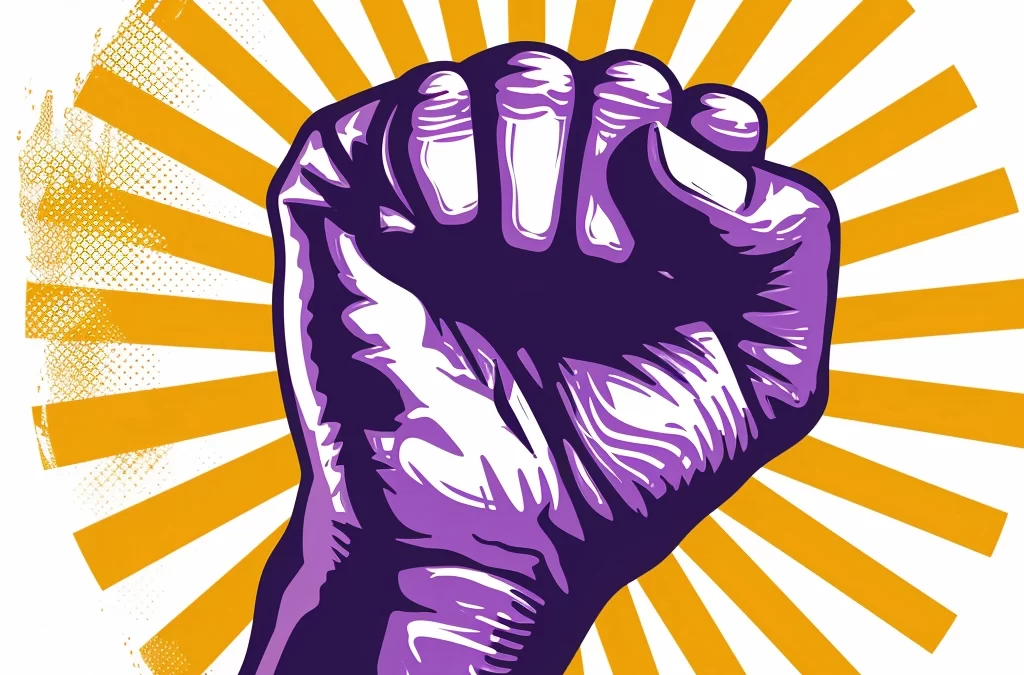SEIU Local 1000’s contract campaign is a member-driven process from start to finish. Our member-elected bargaining representatives negotiate over our wages, benefits, and working conditions – and to protect the hard-earned rights we achieved in previous contract battles. You can make a difference by making your voice heard and taking action in the workplace to support your bargaining team. Below is an overview of who bargains our contract and the different roles that are played during the bargaining process.
SEIU Local 1000’s contract campaign is a member-driven process from start to finish. Our member-elected bargaining representatives negotiate over our wages, benefits, and working conditions – and to protect the hard-earned rights we achieved in previous contract battles. You can make a difference by making your voice heard and taking action in the workplace to support your bargaining team. Below is an overview of who bargains our contract and the different roles that are played during the bargaining process.
Statewide Bargaining Advisory Committee – SBAC
More than 150 member-elected District Bargaining Unit Representatives (DBURs) and Classification Bargaining Unit Representatives (CBURs) make up the Statewide Bargaining Advisory Committee (SBAC). This group meets multiple times a year to formulate bargaining strategies and provide organizing support for the negotiating process. Members of the SBAC act as liaisons between our represented employees at the worksite and the bargaining team.
From members of the SBAC, each of 9 bargaining units elect the members of our bargaining team— the Bargaining Unit Negotiating Council (BUNC).
Bargaining Unit Negotiating Council – BUNC
The Local 1000 bargaining team is made up of 10 BUNCs*—one for each of the bargaining units we represent—Units 1, 3, 4, 11, 14, 15, 17, 20, and 21. Through information gathered from members at Town Halls and from thousands of bargaining surveys, our bargaining team creates bargaining proposals and negotiates with the State over our wages, working conditions and benefits. In addition to negotiating unit-specific issues at the bargaining table, the chairs of each unit represent the common interests of the union when we negotiate at the master table.
Bargaining at the Table & Organizing at the Worksite
Our bargaining team makes proposals on behalf of the represented employees. They also respond to the proposals made by the State. A proposal may be accepted, rejected or followed by a counterproposal. Any agreement reached is signed by the elected bargaining team members but remains tentative until approved by the membership. Represented employees up and down the state have the opportunity to come forward to lead teams at their worksites and help plan and turnout actions to coordinate with our bargaining demands.
Approval of the Tentative Agreement – Ratification
Once a Tentative Agreement has been reached between Local 1000 and the State, the SBAC votes on whether to recommend their support of ratifying the tentative agreement, which is then submitted to the members for a ratification vote. Only SEIU Local 1000 members can vote on whether to ratify a Tentative Agreement. The California Legislature must also approve the Tentative Agreement. If passed, it becomes part of the State’s budget bill. Finally, the governor must sign or veto the bill. With member ratification, legislative approval and the governor’s signature, our new contract— also referred to as the Memorandum of Understanding (MOU)—becomes law.
*SEIU Local 1000 also represents the State Bar, who negotiate separately.
